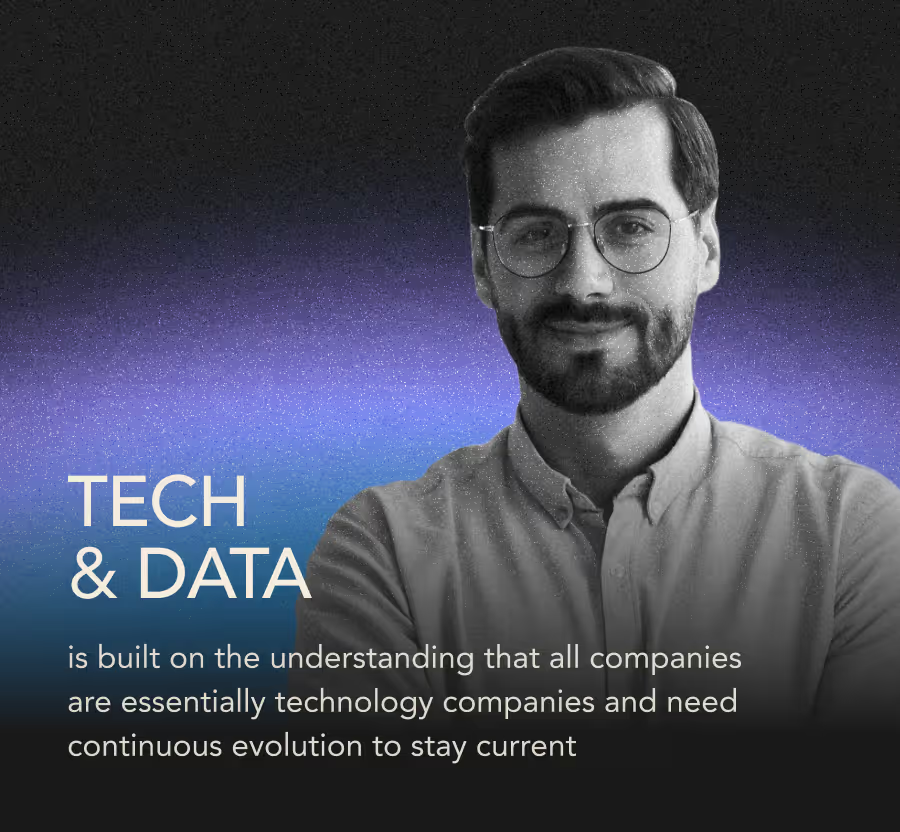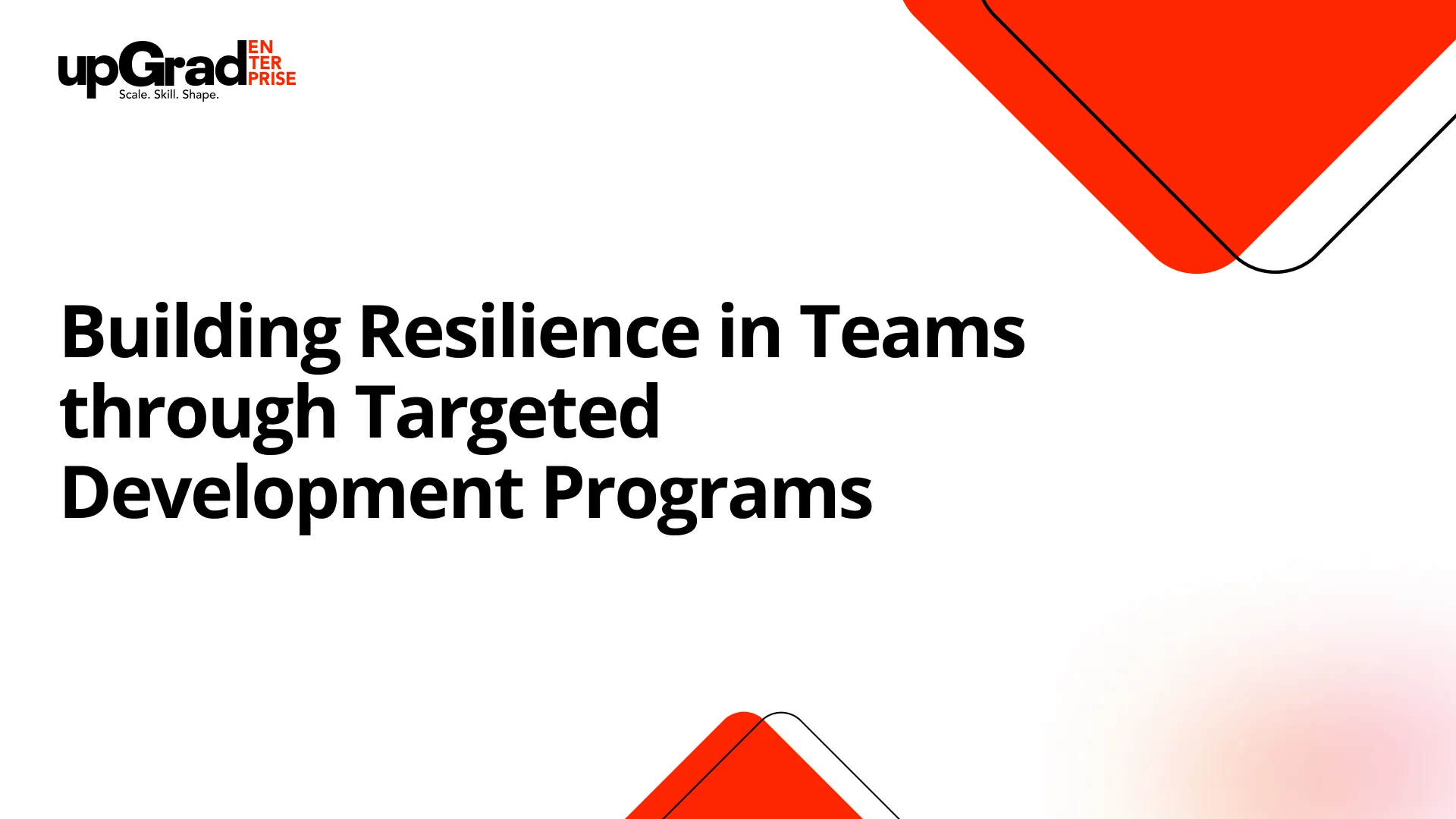In today’s dynamic work environment, teams face constant challenges—from shifting market conditions and evolving client demands to organizational change and unforeseen disruptions. The ability to adapt, recover quickly, and maintain productivity under pressure is what sets high-performing teams apart. This adaptability is rooted in resilience.
Resilience building in teams is no longer just a “soft skill” initiative—it’s a strategic investment. When teams develop resilience, they can navigate uncertainty, embrace change, and sustain high levels of collaboration and innovation, even in difficult circumstances.
With expertise in designing outcome-focused corporate learning solutions, upGrad Enterprise helps organizations implement targeted development programs that strengthen team resilience. By combining evidence-based frameworks, experiential learning, and continuous support, these programs prepare teams to thrive in any environment.
In this article, we’ll explore what team resilience means, why it’s essential for organizational success, and how targeted development programs can foster it effectively.
Understanding team resilience
What is team resilience?
Team resilience is the collective ability of a group to adapt, recover, and continue performing effectively in the face of challenges, stress, or sudden changes. It’s not just about enduring difficulties—it’s about emerging stronger and more capable after setbacks.
Key traits of resilient teams
Resilient teams typically demonstrate:
- Adaptability — The flexibility to adjust priorities and processes when circumstances shift.
- Collective problem-solving — The capacity to collaborate under pressure and find creative solutions.
- Emotional strength — Mutual support and trust that help manage stress and maintain morale.
- Proactive learning — The willingness to reflect on setbacks and apply lessons to future challenges.
Why resilience matters in the workplace
Without resilience, even skilled teams can experience burnout, conflict, and decreased productivity when faced with prolonged stress or change. Resilience building in teams ensures that organizations can maintain stability, protect employee well-being, and sustain performance during periods of uncertainty.
Benefits of resilience building in teams
Sustained performance under pressure
Resilient teams can maintain productivity and meet deadlines even during high-stress situations, reducing the risk of project delays or quality issues.
Reduced employee burnout and turnover
By fostering emotional well-being and mutual support, resilience training helps prevent burnout and encourages employees to remain engaged and committed to the organization.
Stronger adaptability to change
Resilient teams are more open to new technologies, processes, and market conditions, allowing organizations to pivot strategies without major disruption.
Enhanced problem-solving and innovation
Teams with resilience see challenges as opportunities, using setbacks as a springboard for creative solutions and process improvements.
Improved collaboration and trust
Resilience programs often strengthen interpersonal relationships, building the trust needed for transparent communication and effective teamwork.
Strategies for building resilience in teams through development programs
Align resilience goals with organizational priorities
Identify specific workplace challenges—such as adapting to market changes, managing remote teams, or handling workload peaks—and design programs that address these realities.
Incorporate experiential learning
Use simulations, role-plays, and problem-solving exercises that mirror real workplace stressors.
- Hypothetical example: A time-sensitive project simulation where the team must adjust priorities mid-way due to changing requirements.
Develop emotional intelligence skills
Include training on self-awareness, empathy, and emotional regulation so team members can manage stress effectively and support each other during challenges.
Promote continuous learning and reflection
Encourage regular debriefs after projects or major events to identify lessons learned and strategies for improvement. This builds a culture of proactive adaptation.
Blend individual and team development
Combine personal resilience workshops with group-based activities to ensure that both individual coping skills and team dynamics are strengthened.
Measuring the impact of resilience development programs
Set clear success metrics
Define KPIs before launching the program, such as employee engagement scores, project delivery timelines, turnover rates, and team collaboration ratings.
Use pre- and post-program assessments
Evaluate resilience levels using surveys, self-assessments, or 360-degree feedback to measure growth in adaptability, stress management, and teamwork.
Monitor team performance trends
Track how teams handle deadlines, adapt to change, and maintain quality during high-pressure periods. Look for improvements in problem-solving speed and solution quality.
Gather qualitative feedback
Conduct focus groups or interviews to capture team members’ perspectives on how the program has influenced morale, trust, and overall collaboration.
Review long-term outcomes
Assess whether improvements in resilience translate into sustained performance gains and reduced burnout over six months to a year.
Conclusion — Creating resilient teams for long-term success
In an unpredictable business landscape, resilience is one of the most valuable traits a team can develop. It enables employees to adapt quickly, work collaboratively under pressure, and view challenges as opportunities for growth.
Resilience building in teams is not a one-time initiative—it’s an ongoing process that requires targeted development programs, consistent practice, and strong organizational support. When done effectively, it leads to higher engagement, stronger performance, and a healthier workplace culture.
By partnering with upGrad Enterprise, organizations can design evidence-based resilience programs that combine skill development, experiential learning, and continuous feedback to prepare teams for any challenge. The result is a workforce that’s not only ready to face adversity but capable of thriving through it.
Frequently asked questions
1. What is resilience building in teams?
It’s the process of developing a team’s ability to adapt, recover, and perform effectively during challenges, change, or high-pressure situations.
2. Why is resilience important in the workplace?
Resilience helps teams handle stress, embrace change, and maintain productivity, leading to improved collaboration, innovation, and employee well-being.
3. How can organizations build resilience in teams?
Through targeted development programs that include experiential learning, emotional intelligence training, regular reflection sessions, and team-based problem-solving.
4. What are the benefits of resilience building in teams?
Benefits include sustained performance, reduced burnout, higher adaptability, improved problem-solving, and stronger trust among team members.
5. How can the impact of resilience training be measured?
By tracking KPIs such as engagement scores, turnover rates, project delivery times, and gathering feedback through surveys or interviews.









